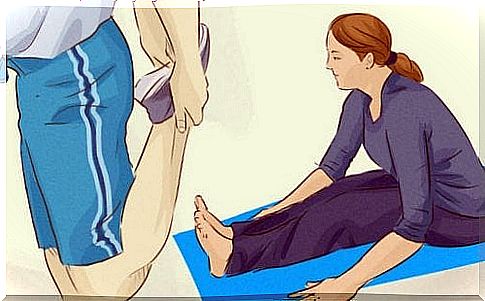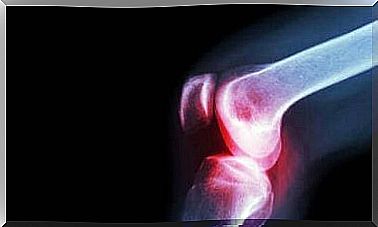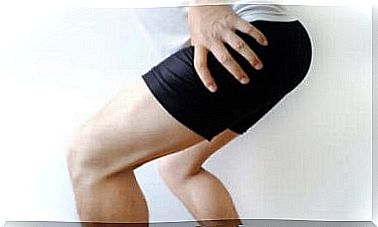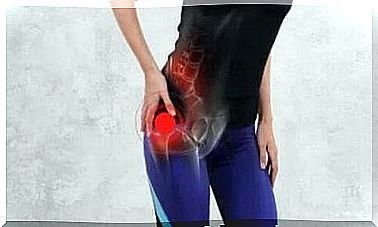Leg Muscle Cramps – 5 Ways To Prevent Them

Leg muscle contractions are passive and subconscious stresses causing pain of varying intensity. Most often it is a problem of the elderly, people struggling with deficiencies of individual substances and minerals, as well as lovers of frequent and intense physical activity.
Leg muscle cramps and the accompanying ailments are troublesome and painful, so it is worth learning how to avoid them, and when they occur – how to relieve the pain and relax the muscles.
Why do we get leg cramps?

For many people, painful contractions that wake them up in the middle of the night are a harsh reality and the norm. In most cases, such nocturnal stresses in the calf, foot or thigh muscles are not dangerous to health and life. However, it is worth learning to control and prevent them in order to avoid such unpleasant motives.
One way is to stretch regularly. Do this both before and after training. This is the simplest change in your daily routine, thanks to which you will greatly improve the condition of your muscles.
If contractions appear regularly, also during the day, it is worth going to a specialist appointment. It is the doctor who will best determine the cause of this problem and help you solve it at the source. Here are some of the most common causes of sudden and painful contractions:
- Much or no traffic
- An excess of some nutrients or, on the contrary, their deficiency
Types of contractions
We can also list different types of muscle contractions, depending on the cause, the intensity of the pain and the duration of the symptoms:
- Cramps caused by too much training or exercise. Most often it is a problem that affects athletes or other people who practice sports regularly, but forget about stretching. This type of contraction can also occur with sudden physical exertion, such as cleaning the house.
- The second type of contraction is due to a different extreme – a complete lack of physical activity. If you spend several hours a day sitting, you are also at risk. It is, in a way, an occupational disease of people working in offices and leading a typically sedentary lifestyle.
We cannot forget about nutrients, vitamins and minerals. They play a great role when it comes to the condition and condition of our muscles. One such cause of cramps may be dehydration.
Other sources of the problem are also deficiencies of magnesium, calcium and potassium. It is also worth mentioning that taking specific types of drugs – including diuretics, beta-blockers or drugs for hypertension – increases the risk of muscle cramps.
Leg cramps may or may not be one of the symptoms associated with more complex medical conditions. These include diabetes and thyroid disorders. They change the metabolism and often lead to irreversible changes in the body.
How to protect yourself from cramps?
A sudden attack of pain and tense muscles can last from a few seconds to several minutes. Relief is brought, among others, by massage, as well as stretching and relaxing exercises. When contractions occur in the muscles of the legs, more specifically the calves, standing is most appropriate.
In addition to stretching, also use cold or warm compresses. To avoid this painful and troublesome problem, be sure to introduce some healthy habits into your life that will help you with this:
Keep your body hydrated

To keep your body hydrated, you should drink at least 8 glasses of water each day. Such a dose of this drink allows all cells and organs of our body to work efficiently. It is also great for muscles, ligaments and blood vessels.
8 glasses of water is the recommended dose, but it will not be enough for everyone. If you play any type of sport on a regular basis, your goal should be up to 12 glasses a day.
Additionally, eat foods (especially fruits and vegetables) that are high in water. Tomatoes, cucumbers and spinach will be a good choice.
Stretching exercises

Whether you play sports or prefer static activities, stretching is one of the best ways to avoid muscle pain or cramps.
It’s a good idea to do stretching exercises at least once a day. Thanks to this, the muscles will stay in good condition and will not cause such surprises as waking up at night due to contractions.
Stretching before going to bed is a very good habit. However, remember to adjust the intensity of exercise to your abilities and practice.
- Sit on the bed, stretch out your legs and lower your chest. The goal is to put your hands on your feet or get them as close to each other as possible.
- Another stretching exercise requires standing. Place your right leg on the bed and straighten it. Bend your chest to your right leg and pull it in. Then do the same exercise with your left leg.
Additional exercises
Simple and pleasant types of physical activity are enough, which, if performed regularly, will effectively protect you from soreness or cramps. These include walking, jogging, cycling, yoga and swimming.
This kind of low-intensity activity gradually strengthens the muscles and joints without causing much fatigue. Of course, don’t forget about stretching, which is helpful even after the slightest workout!
Take care of a healthy diet

Nutrition is the key to health and wellness. By properly composing your daily menu, you will protect yourself against such ailments as muscle pain or cramps. Choose foods rich in potassium (such as bananas) and magnesium (cereal grains).
A healthy and balanced diet must also include plenty of fruits, vegetables and nuts. Instead, you should eliminate products such as refined flour, sugar and fried foods.
Appropriate footwear
In many cases, leg muscle cramps are actually the result of poorly chosen footwear, which forces our movement system to incorrect posture and habits. For example, women who spend many hours a day wearing high-heeled shoes or practicing sports in poorly chosen shoes are more likely to experience leg muscle cramps.
Avoid platform shoes, wedges, heavy shoes, and shoes with very flat and thin soles. Closed footwear is more comfortable and safer. Remember that it should hold well on the foot and not move when walking.
Also pay attention to the socks or tights you wear. Too tight, they restrict blood circulation, thereby compressing the muscles and increasing the risk of cramps.









